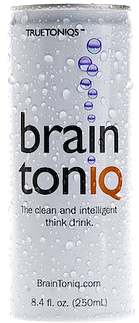“It’s Apples to Oranges to Bananas…”
by Tod Yazdi
So you have decided to outsource your fulfillment and distribution-maybe you didn’t want to buy a warehouse, purchase forklifts, manage additional personnel and invest in costly IT. You have done your homework and decided on the best location-maybe you sell nationwide and the Midwest offered a centralized location within your customer base. You have even gone out and talked with several different fulfillment centers.
You have narrowed it down to three, and now it’s time to get down to business. What is the cost? You have three proposals that you lay on the conference room table to compare to each other, but it’s like comparing apples to oranges to bananas. How can you compare bids when all have different pricing variables? In one bid there is a labeling fee, in another you have to ship on their account – which is marked up, and the third packaging is not included in the price. The variables can be endless and the terms can be confusing.
When Scott Ohlgren, owner of BrainToniq, decided to outsource his fulfillment and distribution, he found it nearly impossible to determine the cost of doing business with a fulfillment center, much less to compare and contras
We suggest to Scott and others in his situation to prepare a Fulfillment Cost Model. Simply put, give your fulfillment center data on past orders or create a hypothetical group of orders and have them determine the total cost. Do the same for inbound receipts and what you would store at their facility and tell them not to worry about their pricing terms, translate it into how you actually do business.
To view the entire article, including a Fulfiment Cost Model, click here
“I looked for pricing that was straight forward with no hidden fees and costs that I could not quantify.” According to Scott, “it was important for the fulfillment providers to translate their costs into the way I do business. Then I could compare pricing and understand what the total cost of my fulfillment for each was. In the end, I chose the provider with competitive pricing that was also easy to understand. I didn’t want a bill that wouldn’t make sense to me or was different than what I was expecting.”
Creating a Fulfillment Cost Model serves two purposes. First, it helps you to take bids that are different and translate them into common pricing. This allows you to easily compare and contrast pricing from different providers. Second, once you select a service provider and your first bill comes, it will hopefully eliminate any surprises!
Obviously pricing should not be everything. You need to choose a logistics firm that is a good partner, has a high level of service and a commitment to making your business a success. Then, they have to provide a good value. Sometimes you need to take pricing into your own hands – and put it in your own terms – to be able to compare bids….or else it’s apples, to oranges to bananas!

